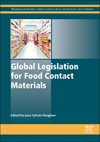Global Insights: Globalization Update

In this space last fall, I introduced what has come to be known as “The Globalization Study.” This report, more formally titled “The Impact of Globalization on the U.S. Dairy Industry: Threats, Opportunities and Implications,” was conducted by the Innovation Center for U.S. Dairy (IC) with support from management consultants Bain & Co.
The study took a comprehensive look at the impact of globalization on all aspects of the U.S. dairy supply chain, both internal and external. Then it took those conclusions a step further, examining strategic options and laying out a plan of work designed to improve the competitiveness of the U.S. dairy sector in a more globalized playing field.
This report wasn’t developed as an academic exercise, though. It is not sitting on a shelf; it is not collecting dust. The Globalization Study has made the rounds. Through webinars, editorials and presentations at industry meetings, members of the IC board and others have shared the results widely. The structural constraints that prevent the U.S. dairy sector from reaching its potential in a global market are starting to be addressed.
Here’s an update on what’s happening:
• Among the strategic options considered, the IC board agreed to pursue the recommendation of the Globalization Study – an approach characterized as “Consistent Exporter.” In short, this means transitioning our policies and commercial practices from a production-centric industry to a customer-centric one.
• The IC board formed a globalization operating committee (GOC) to address the challenges to the “consistent exporter” path. Coming off a year in which numerous committees and advisory boards were established to direct change in the industry, the GOC has its role too: it serves as a high-level forum to identify gaps or barriers within the industry where IC board resources might facilitate various solutions to the study’s seven major objectives. Some of these programs are outside the IC’s purview, such as reforms to our milk pricing system and pursuit of trade treaties, while others are more commercial, such as developing better tools to mitigate price volatility and to improve our ability to deliver to customer product specifications.
• The GOC identified two areas where it can play a leading role: volatility management and improving existing food safety and traceability systems. For these two priorities, separate subcommittees were established and participants have begun to roll up their sleeves and work toward solutions.
• The GOC, staffed largely by Dairy Management Inc. and U.S. Dairy Export Council, will continue to meet regularly to gauge and monitor progress within each strategy. Expect more news in the months ahead.
The whole premise of the Innovation Center is to formulate precompetitive, industry-wide solutions to industry-wide challenges. Therefore, structural change will be a multistep, multiyear effort. And yet, members of the GOC feel a great sense of urgency to get things done and get them right.
One of the major conclusions of the Globalization Study is that the United States has a glaring, but finite, window of opportunity to capitalize on a latent gap between projected global dairy demand and projected global dairy supply. In the near-term, we are well-suited to expand our share of the pie. But 10 to 15 years from now, we will face formidable competition from emerging, low-cost suppliers from South America and Eastern Europe (see chart).
That gives us about a decade to restructure and build a defensible competitive position.
Looking for a reprint of this article?
From high-res PDFs to custom plaques, order your copy today!







